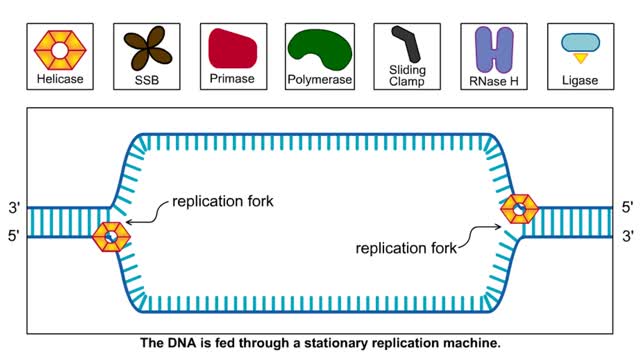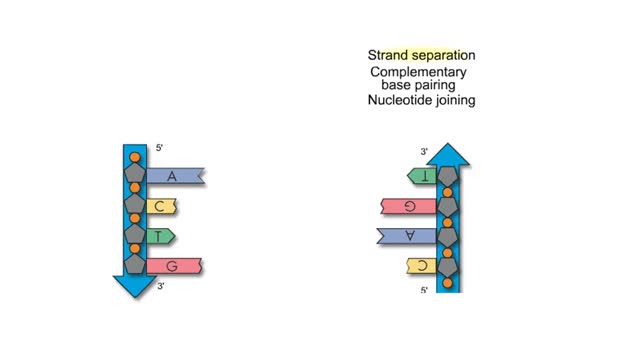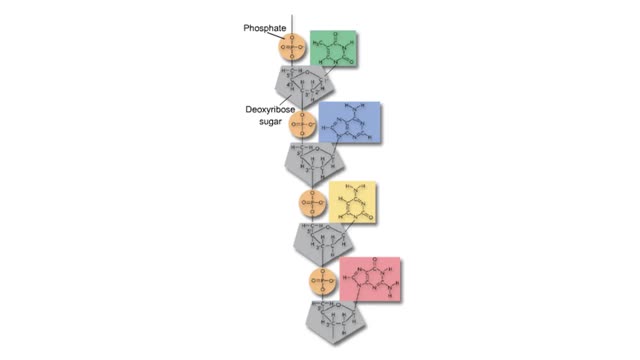Semidiscontinuous DNA replication
By: HWC
Date Uploaded: 04/08/2020
Tags: homeworkclinic.com Homework Clinic HWC Semidiscontinuous DNA replication lagging strand polymerase polynucleotide strand helicase enzyme replication fork primase Okazaki fragments chromosome
During DNA replication, one of the two DNA strands, the leading strand, is replicated continuously, or all at once, in the 5' to 3' direction. The other strand, called the lagging strand, is replicated discontinuously, or in pieces, in the 3' to 5' direction. This is necessary because DNA polymerase, the enzyme that synthesizes a new DNA strand using a template strand, can only add nucleotides to the 3' end of a polynucleotide strand. Overall, DNA replication is semidiscontinuous. To begin DNA replication, a helicase enzyme attaches to the double helix and unwinds the two strands, exposing them as templates for replication. The point at which the two strands are being separated is the replication fork. The enzyme primase attaches to each of the template DNA strands. Primase synthesizes a short RNA primer on each template strand. The primers are assembled in the 5' to 3' direction. After the primer reaches a certain length, primase drops off of the template strand. A DNA polymerase molecule attaches to each DNA template strand at the 3' ends of the RNA primers. Each DNA polymerase begins adding DNA nucleotides to extend the primer in the 5' to 3' direction. As the replication Cork opens, the DNA polymerase on the leading strand template continues to synthesize a new DNA strand. However, the DNA polymerase on the lagging strand template, which can only synthesize a new DNA strand in the 5' to 3' direction, is moving away from the replication fork. Therefore, primase must again make an RNA primer on the lagging strand template, and DNA polymerase must continue making DNA beginning at the new primer. This results in a series of short fragments, known as Okazaki fragments, on the lagging strand template. The Okazaki fragments on the lagging strand template must be connected to form a complete DNA strand. To accomplish this, a different DNA polymerase recognizes and removes the RNA primers and replaces them with DNA. However, the polymerase cannot form the bond between the DNA nucleotide at the 3' end of one fragment and the nucleotide at the 5' end of the adjacent fragment, so there is a "nick" in the DNA strand. The enzyme DNA ligase is needed to form this bond and eliminate the nick. The process of continuous DNA synthesis on the leading strand template and discontinuous DNA synthesis on the lagging strand template continues until the replication fork reaches either the end of the chromosome or another replication fork moving toward it in the opposite direction.
Add To
You must login to add videos to your playlists.
Advertisement












Comments
0 Comments total
Sign In to post comments.
No comments have been posted for this video yet.